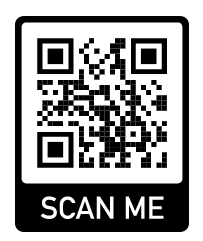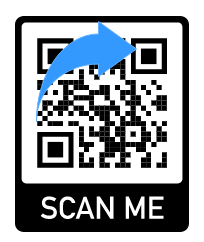QR Code is something that has been around for a while. If you’re like me and don’t carry cash, your first option is probably scanning QR codes for payment. It’s a lot easier than the hassle of having to withdraw cash from an ATM at all times.
We all remember that usage of QR codes peaked during COVID-19 and has been relevant ever since. Some of us started using it to prevent contact with bacteria, and some shops and businesses stopped accepting cash. However, that’s only a fraction of the information we know and a minuscule amount of time we’ve spent using QR codes. There’s a lot more we don’t know about them.
So, I did some research to help gather enough information that one might want to know about QR codes.
What is a QR code?
A Quick Response (QR) code is a tiny, square-shaped box with black and white pixels that stores data. These little square grids can store a lot of information and are easily accessible. We can see what data a QR code stores by simply scanning it using a mobile app or with the help of our normal phone camera.
The size of a QR code depends on the number of modules. The smallest QR codes have 21x21 modules, whereas the largest ones have 177x177 modules. The maximum data capacity of a QR code is 7089 numeric characters, 4296 alphanumeric characters and 1817 Kanji characters. If a QR code has more modules and is tightly packed together, it contains a lot of data.

History of QR code
Denso Wave, a Japanese automotive company, invented QR codes in 1994. The two-person development team led by Masahiro Hara were asked to develop a two-dimensional code that read quickly, and a year later, they delivered.
It was a complex task to create a 2D code with transverse and longitudinal dimensions, as the most important feature was to make it small and instantly recognisable. However, developing a 2D code was difficult, not because it wasn’t introduced at the time but because it was hard for the scanner to locate the 2D code compared to the barcode. This was done to replace the usage of barcode, which only had a transverse dimension and a limited amount of storage of about 20 alphabetic characters. The workers had to scan approximately 1000 barcodes daily, which made it inefficient to work with.


As the main problem of developing a 2D code was locating it, Masahiro Hara had the idea of adding information to the code, which helped detect the code. Hara and his team studied day and night to find the perfect ratio, which could scan the code from any angle. A unique ratio of 1:1:3:1:1 was discovered for the finder pattern, which was perfectly detected in all instances.
Pros and Cons of QR codes
There is quite a lot of usage of QR codes. From doing monetary transactions to scanning a restaurant’s menu, QR code is flexible in terms of usage. It’s no secret that multiple companies and businesses use these little square-shaped grids to store their data for multiple purposes. Let's look at some of its pros and cons.
Pros:
Data Storage
The main feature of the QR code is it stores data. There is no restriction on what kind of data a QR code can store, which makes it widely usable. Any company, small-scale business or even a person can use it. This makes it very flexible in terms of use, as there is no limit on the type of data it stores.
Size Flexibility
Another main feature of QR codes is their small size. It doesn’t have to be, but it was specifically designed to take up less space. As they are tiny in size, they can fit in little spaces. This is one of the important features of QR codes and what makes them different from other codes.
Effortlessly Trackable
If you’re into online shopping, you have definitely ordered some stuff online. When your order is confirmed, you usually get a certain confirmation number or a QR code. Scanning the QR code helps track your order and lets you know its current status. This makes it easier for us as it gives an idea of where our receivables are and when they’ll be at our doorstep.
Saves Time and Cost
Due to its versatile use and requirement of no different gadget to scan, it saves a lot of time and cost. This is one of the many features of why many corporations effectively use QR codes daily. Big corporations and businesses require hundreds of codes to store data. This is where QR codes come to the rescue. QR codes can regenerate and be read in a matter of seconds, which saves a lot of time. QR code’s accuracy can also never be beaten as it is always correct if given the correct information.
Damage Resistant
QR codes are damage resistant. The data is recoverable even if there’s unerasable dirt or the code is damaged, making it lose 30% of its details. This feature of QR codes makes them usable in fields which require heavy-duty work. Manufacturing workspaces like garment and textile factories, warehouses, electronic industries, etc., can use this feature of QR codes to their benefit.
Easy Scanning
One of the fun features of QR codes is that they can be scanned in 360° and don’t require any special scanner like a barcode scanner does. There are no strict rules in terms of scanning a QR code. You don’t have to place it in a certain position for it to be read by the scanning app. You can scan these codes with the help of your phone and from any side or direction. This saves a lot of time as you don’t have to spend time figuring out how to scan the code.
Cons:
Security Risk
QR codes are easily available everywhere, and you can scan them with a few taps on your phone. However, not all QR codes are safe.
There are people out there with malicious intent who might place QR codes in public. Scanning these codes might redirect you to phishing websites or download malware on your device unasked. This can be a huge security threat for you as this malware can capture your device, and you might lose access to it completely. So, only scan QR codes from known and trusted sources.
Lastly,
Digging too deep can arise some complex questions. However, I tried to make this blog as simple as possible. Hope this article answered any questions you had in your mind.
If you think I missed out on something, let me know by commenting below. Subscribe!
